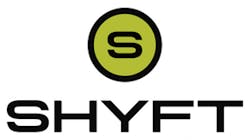The Shyft Group, Inc. acquired XL Fleet as planned and initially announced by Spruce Power last month. The acquisition includes the option to extend employment opportunities to XL Fleet technical talent, assume a short-term leased facility including equipment in Wixom, Mich., and support the completion of a pilot development agreement with the Department of Defense.
“Blue Arc, which Shyft unveiled at NTEA Work Truck Week last year, brings fleet electrification solutions that leverage our 50 years of experience in last-mile delivery, a noteworthy anniversary which we celebrate this year,” said Daryl Adams, president and CEO of The Shyft Group. “The response to Blue Arc’s commercial-grade offering has been strong. With the ramp up of EV production in 2023, we welcome the opportunity to integrate talent and discrete assets that will help us charge ahead to meet the electrification needs of our customers.”
The incoming team members will be based either in Plymouth or the 24,655-sq.-ft. Wixom Technology Center which will continue to be used for technical and test work as Shyft evaluates how the facility best complements its footprint going forward.
“We are thrilled to integrate this team, equipment, and the facility into our growing EV business,” said Eric Fisher, SVP and general manager of Shyft Innovations. “It’s always been part of our plan to expand the team as we move towards production and we feel fortunate that the timing worked out to allow us to bring significant talent in this way. We expect it to help accelerate our build out capability.”
The DOD pilot program Shyft assumed as part of the acquisition supports the completion of an awarded contract by the Defense Innovation Unit (DIU) of the Department of Defense and the U.S. Army’s Project Manager Transportation Systems (PMTS) to prototype a fuel-saving technology for military vehicles. Shyft will help complete the application of sustainable fleet vehicle technologies that can extend the operational range of military tactical vehicles, while supporting troops’ safety and providing significant fuel and operating cost savings and reducing greenhouse gas emissions.
